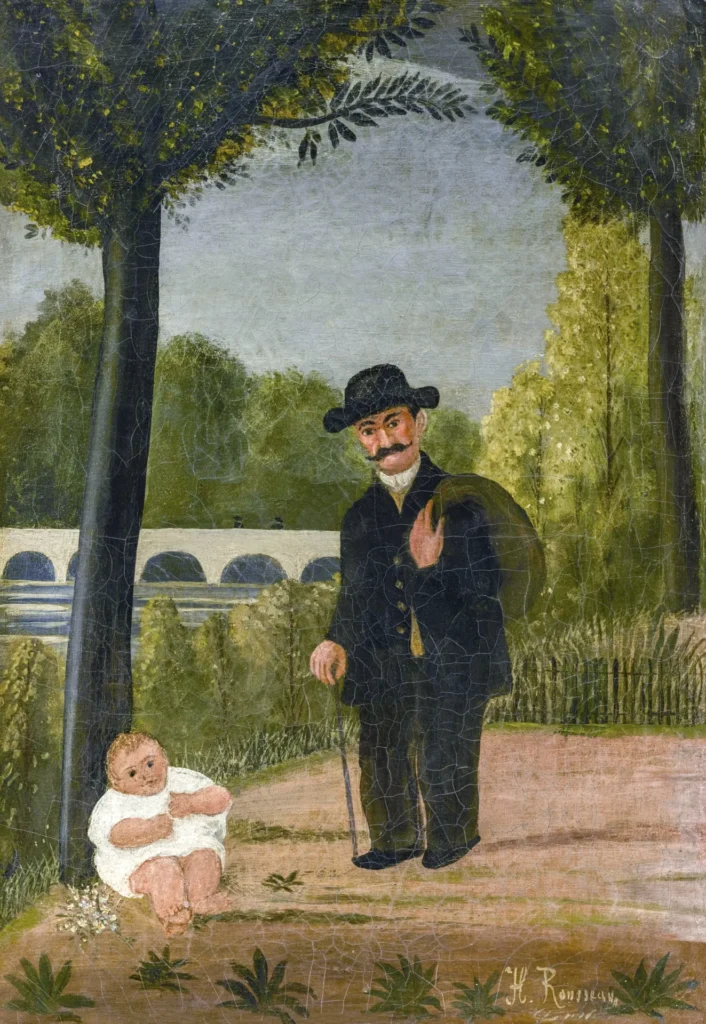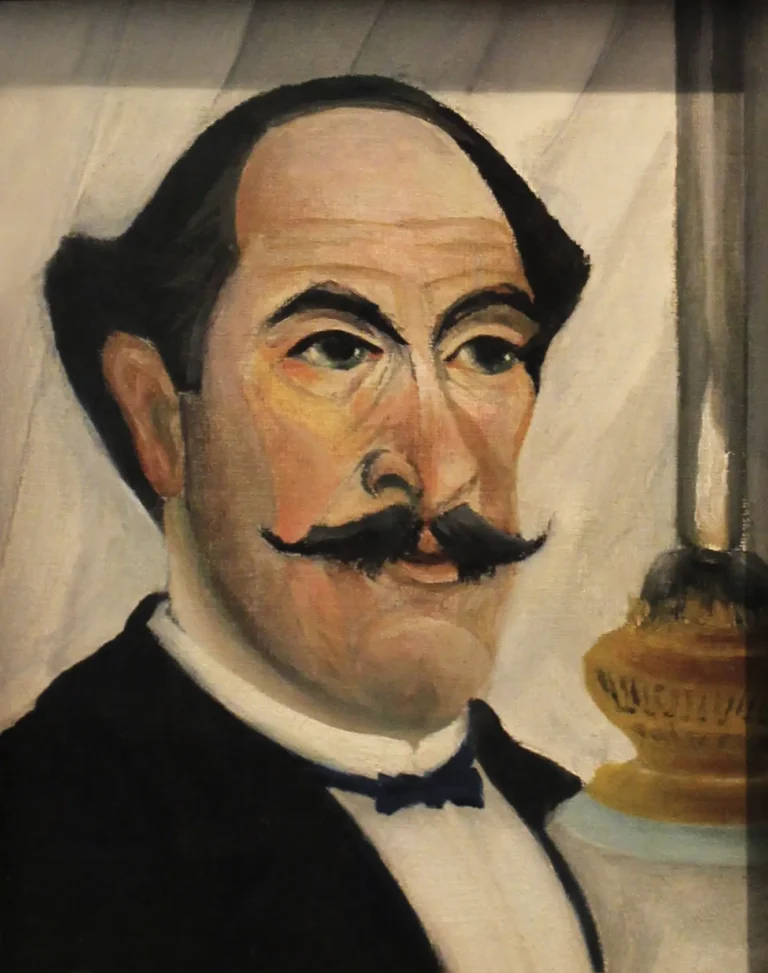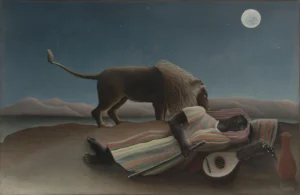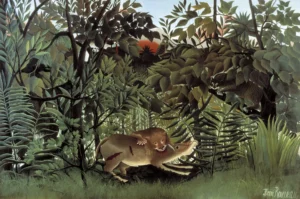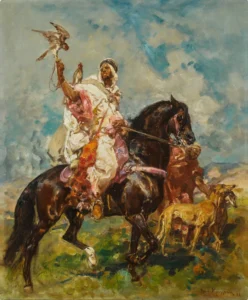Stroller and Child (1905–1906)
Henri Rousseau's Stroller and Child is a delightful oil on canvas that captures a simple yet poignant moment in everyday life, showcasing a man pushing a stroller with a child inside. Created between 1905 and 1906, this piece reflects Rousseau's naive artistic style, characterized by its simplicity and absence of formal art training. The painting belongs to the Dallas Museum of Art collection, and its charm continues to resonate with viewers today.
1905-1906
About the Artwork
Created during the early 20th century, Stroller and Child exemplifies Henri Rousseau's unique approach to art, a period marked by the exploration of post-impressionism and the rise of modern art. Rousseau, despite having no formal education in art, developed a distinctive naive style that was characterized by vibrant colors and whimsical subject matter. In this painting, Rousseau portrays a relatable slice of life, illustrating a tender moment between a father and his child that evokes feelings of warmth and joy. The scene reflects the societal changes of the time as urban life became increasingly visible in art, and Rousseau’s work often celebrated the simplicity of daily experiences as well as a connection to nature. His legacy endures, influencing numerous avant-garde artists who followed.
Did You Know
Henri Rousseau is often celebrated as a key figure in the naive art movement, which emphasizes simplicity and a child-like perspective in the depiction of subjects, contrasting sharply with the more academic styles of the time.
Rousseau’s work has had a significant impact on modern art, influencing major figures such as Pablo Picasso and André Breton, who admired the artist’s ability to convey emotion through vibrant colors and simple forms.
Interestingly, Rousseau was primarily self-taught, never receiving any formal art education. His background as a customs officer contributed to his unique viewpoint as an artist, allowing him to observe everyday scenes and translate them into his imaginative works.




